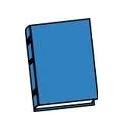In addition to stocking adequate amounts of water for drinking, you will also need plenty of water for hygiene and sanitation purposes. You can reduce the amount of extra water required by stocking up on paper plates, cups, and plastic utensils that can be simply discarded and will not require cleaning. If you still have running water, you will need to fill all miscellaneous containers capable of holding water such as coolers, water pitchers, etc.
After a disaster and the water is still running, fill all your bathtub(s). However, you may not want to trust the water quality, particularly after an earthquake or flood. You will also need to shut off the water inlet to your water heater to provide extra water without having to worry about it becoming contaminated. There's a likelihood that contaminants could be drawn into the water system. You can also plan ahead and fill a clean trash can with a tight-fitting lid. Then place the trash can in the backyard, garage, or a storage shed. Treatment with a few drops of chlorine bleach will help to maintain your stored water. If you have small children around, all water storage cans should have their lids secured tightly in some fashion to prevent any accidents.
If you don’t have running water, sanitation will become a major issue for you and your family. You should save your "grey water," The water that you used for washing dishes, bathing, etc. should be collected in a bucket or trash can. Don't let it simply run down the drain. A toilet can still be used even if you don't have a water supply. A toilet can be "manually" flushed by rapidly pouring in about half gallon of water into the bowl. Do this quickly and all at once. You need to make sure that you have safe access to a bathroom. In some cases you may not have access to a toilet.
Your disaster kit should also include a port-a-potty or homemade toilet. A good, inexpensive one can be made from a five gallon plastic bucket and a toilet seat. You can use the 13 gallon size kitchen trash bags as liners for your home-made toilet. Clean empty buckets are sold at most home improvement and hardware stores.
In most situations you should have at least one gallon of water for drinking purposes, one gallon for sanitation and one for hygiene purposes. This sounds like a lot but is really a very minimal amount. After having gone through a major flood of the "500 year" variety, you very quickly realize even that much will barely get you through the rough times when there is no good water available.
Got potty?
Staying above the water line!
Riverwalker
Merry Christmas to Everyone
11 years ago


















4 comments:
instead of just a bucket, or a "lugable loo", i bought a commode "chair" at the thrift store. they are adjustable in height so the frail, elderly or handicapped, can use them more easily than a standard toilet. the seat is firmly attached to the metal framework, which gives the users something to hold on to, that won't slip off the bucket or easily tip over. they can help themselves up, using the raised "arms" of the chair.
To: irishdutchuncle
That's a really great tip! I've seen them before but didn't know how portable they were. Thanks.
RW
they aren't that portable, although the one i bought had some of the pieces attached with wing nuts, which fooled me into thinking so. it can fit into the back of our little BOV if necessary, and i'll pack around it. breaking it down to make it more portable for camping, is on my to-do list. i envisioned using it in one of those square shower/shelter type tents, like a portable "outhouse".
To: irishdutchuncle
The ones I've seen look like they could be made more portable. Let us know how the modifications work out if you get around to improving its portability. Might need to look into getting one and seeing what I could do to make it portable...sure would be better than a bucket and cheaper than a port-a-potty! Thanks.
RW
Post a Comment